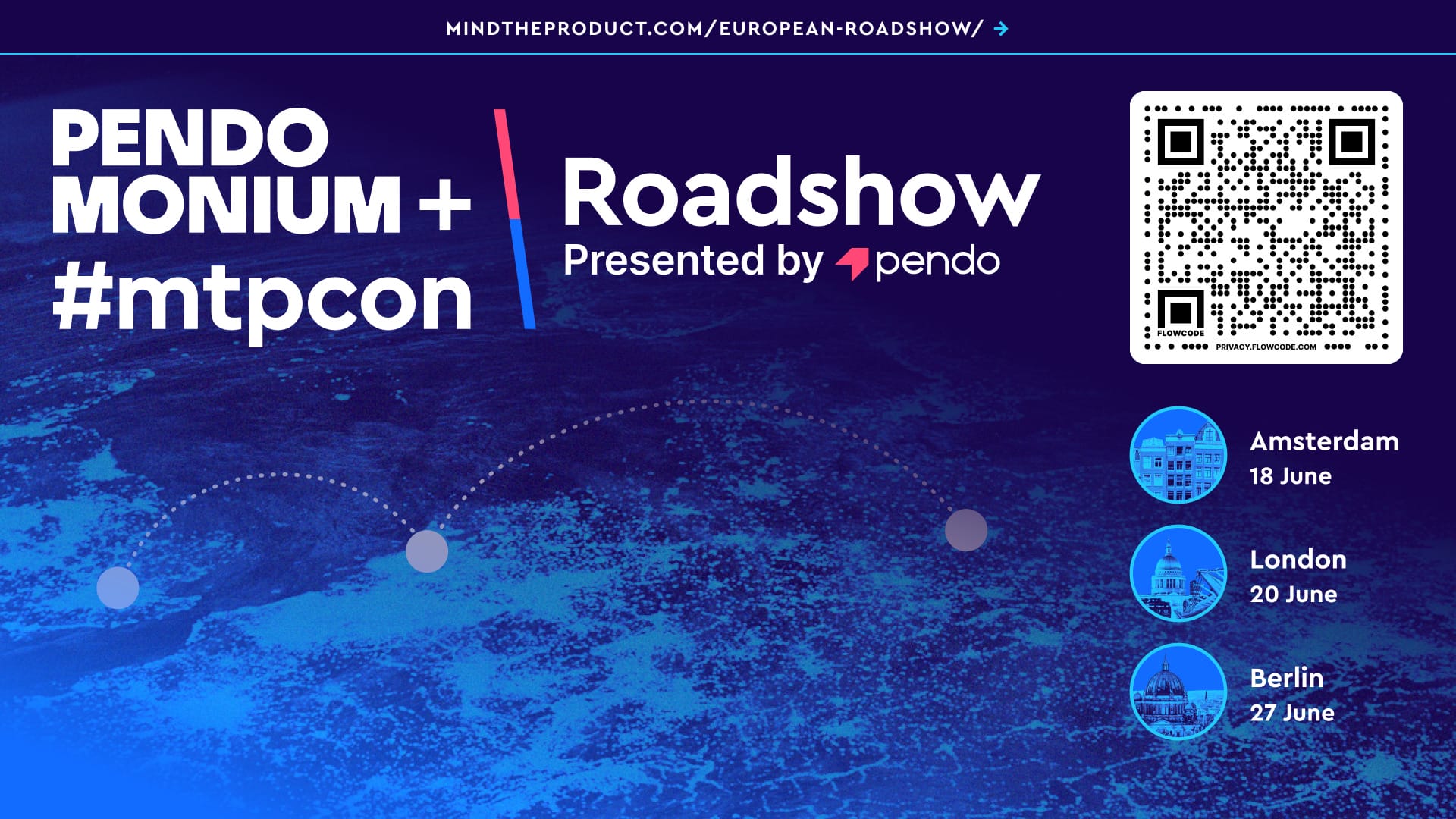The day before Mind the Product London 2017 we ran a forum for invited product leaders on a series of topics with some of the leading product managers from around the world. Here’s what we learned about product leadership.
All conversations were under the Chatham House rule, so no one is quoted – but suffice to say they were all heavy hitters whose opinions are well worth hearing.

Developing Your own Team
Product leaders have many questions – and even more answers – about how best to develop and empower their teams.
Your first task as a leader is to set the vision of the team and make sure that the team is set up to deliver it. This means you have to spend time working with everyone in your team, making sure that they know what success looks like for them personally and for the collective they are a part of. After this, you need step back and give the team the autonomy to get on with making the decisions, so that they are made as close to the point of delivery as possible.
A senior product manager needs to be able to work on more complex projects, with a less defined scope or outcome. They also need to be able to effectively manage difficult stakeholders in a collaborative fashion.
Empowerment is different in every organisation, and depends on what stage the organisation is at in its lifecycle. An early stage start-up that is constantly pivoting needs to have an open approach to ideas and allow people to try anything in a short space of time. If you are in a more mature company, then you might need to set a number of constraints, but allow people more freedom within that brief. Either way, it comes down to trust in your people and knowing how best to motivate them towards solutions. It’s better to start with trust as a default position than something that must be earned.
Product isn’t for everyone and sometimes as a leader you have to be ruthless in how you handle this. One product leader gives an underperforming product manager three sprints to prove they understand the issue, show they know how to move forward and finally to demonstrate progress. If it’s long enough to prove or disprove an assumption, it should be long enough to get someone moving in the right direction. Don’t hold back feedback – the sooner someone has it, the sooner they can change. Wherever possible, give feedback early and often to avoid a storm of criticism at a later date
After a certain level, a product team becomes the Product Leader’s own product. You can manage the team in exactly the same way you have managed product up until this point – with artefacts like canvases, processes like testing assumptions, and tools like metrics to demonstrate progress.
Collaborating with other teams
Another key function of product leadership is to drive collaboration with other parts of the business. This enables the organisation to make the most of its different parts, rather than having them work against one another.
True collaboration is about taking other peoples’ perspectives, adding them to your own and coming up with something that no one was expecting. The greater the number of perspectives, the more chance you have to solve a problem. This is why cross-functional teams are so important.
Book suggestion: Product Leadership
Working across cultures means working with teams that have different measures of quality. A tech focussed development team will have a set of things it gets excited about, but these won’t be the same for thematic based product teams. Collaboration means building empathy and respect for each of these perspectives and finding the common ground from which to base success. Organisation structure matters much less if you have a strong, shared vision that lots of people buy into.
Book suggestion: Radical Candour
Part of a product leader’s role is to excite different teams about the problem you are trying to solve. This often involves being the salesperson for your product – which means explaining the same opportunity in lots of different ways, depending on the audience. If you’ve got a team you’re struggling to work with, you should rotate your team members into that team for a couple of weeks to help build empathy and better understand their problems.
Book suggestion: The Innovator’s Dilemma
Many organisations find it hard to change through their usual processes. A well tested method is to set up a separate team to drive change, one that doesn’t have to work within the normal confines of the organisation. The only way this works in the long term though is to communicate constantly with the core part of the business, so that they understand and trust what you are doing. You have to separate and then show.
Retrospectives drive change unlike anything else. You can get buy-in to almost anything if you say you’ll try it for two weeks and then everyone will have a chance to decide if it worked or not.

How to Lead Change
Many of us will be tasked with driving a change of some form in our organisation. Through this process, it is traditional to see some people as resistant to change and others as embracing it.
If you want to embrace change, you have to remove this binary perspective. We all have the capacity to embrace or resist change, and it’s down to the context in which the change is presented that determines how we react. By talking about people as though they’re in one camp or the other, you block the ability to have empathy for their position, which means you’re much less likely to be able partner with them effectively.
We are hardwired to avoid danger, far more strongly than we are encouraged to pursue opportunity. Humans perceive someone else’s change in the same way that we perceive a physical threat. The brain’s reaction to someone coming in and trying to change a process in your time is exactly the same as when you sprain your ankle. As such, we work hard to avoid this threat at all costs. When someone tries to avoid a threat for any length of time, their brain starts to operate in a much less effective fashion – reducing its ability for collaboration, problem solving and decision making.
When we are trying to impress people, we look to appear knowledgeable, confident and competent. Unfortunately, this usually means we end up resisting the very behaviours that can get us to this point – like asking questions to help us become more knowledgeable. By the same token, humans are the only animals that consistently comply with social norms and follow others. So product leaders have to cultivate the environment they want to see.
Where’s my SCARF?
Once you have accepted it is your responsibility to create conditions that mean people are receptive to change, consider David Rock’s SCARF model. This gives you a framework for understanding how any particular change might affect an individual. It stands for:
- Status: Our relative importance to others
- Certainty: Our being able to predict the future
- Autonomy: Our sense of control over events
- Relatedness: Our sense of safety with others
- Fairness: Our perception of fair exchanges between people
If your change increases any of these elements, it is likely to be seen as positive. If they are reduced then you’ll likely see a resistance and subsequent downshift in performance. Those leaders that are able to drive change most effectively offset one lever with another – so if you have to reduce someone’s status with one move, try increasing their autonomy in another way.
Psychological Safety
The highest performing teams admit more mistakes than any other teams. This is due to the psychological safety that they feel from those around them. Leaders can cultivate this culture by showing their own:
- Vulnerability – talk people through your own thinking and especially your own mistakes.
- Curiosity – be interested in other people’s perspectives and ideas. Use active listening techniques to explore with them.
- Empathy – come up with solutions which are based on other people’s’ emotions and experiences.

What is a Product Culture?
If we want to drive change across our organisation, we need to look outside our specific spheres of influence and get to the heart of how things operate. We can help to progress change by using all the techniques we’ve learnt in product management.
According to Edgar H Schein, the godfather of organisational design, “Culture is what it’s ok to assume”. With product managers, you are more likely than not to see empathy, experiments and data being used to inform decisions in products that are constantly iterating – this is the product culture that we are aiming to drive through the rest of our organisations.
As with anything to do with product management, the best approach is to start small and prove your hypothesis through delivery and measurement. Do the same with the way you and your teams work, which will then help develop the culture of your business.
Product Leadership is Maturing
So after a day of conversation, discussion, and debate, what was the general feeling? It seemed like the leaders in the room had never been in a more effective position to drive change across their organisations. However, with that maturing of the product leadership role has come added responsibilities that some are still working out how to deal with. Collaborating with other teams, providing psychological safety, and driving cultural shifts are very different to the activities most of them were doing as just product managers – but as with any good product, they are iterating new approaches, listening to their users, and keeping an open mind.







Comments 1